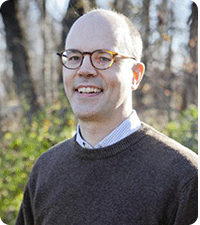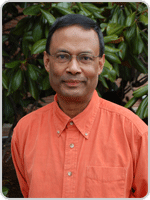- Details
-
Category: Department News
-
Published: Tuesday, July 01 2014 10:11
| Wolfgang Losert will serve as Insterim Associate Dean for Research in the College of Computer, Mathematical and Natural Sciences (CMNS). Wolfgang has an appointment in physics, the Institute for Physical Science and Technology (IPST), and the Institute for Research in Electronics and Applied Physics (IREAP). As a member of the Nonlinear Dynamics Group, Wolfgang's research focuses on discovering emergent dynamic properties of complex systems at the interface of physics and biology, with a special emphasis on cancer biology. Within CMNS and the broader scientific community, Wolfgang actively fosters cross-disciplinary interactions and new research and educational opportunities. He chairs the Division of Biological Physics of the American Physical Society, and is part of a trans-university initiative of HHMI (called NEXUS) that is developing new science and math courses for biology majors and pre-health care students that can serve as a national model. He helped initiate and now leads the Partnership for Cancer Technology, which provides UMD faculty and graduate students the opportunity to tackle pressing problems in cancer research in collaboration with National Cancer Institute experts. To take on this new position in the dean’s office, Wolfgang will be stepping down from his roles as member of the Burgers Board for Fluid Dynamics and director of the graduate program in biophysics. Wolfgang’s interdisciplinary expertise will be especially valuable in the context of our recently integrated college. | 
|
- Details
-
Category: Department News
-
Published: Friday, June 27 2014 09:58
Below are a few articles from around the web:
Sankar Das Sarma is mentioned in quantum computing article (New York Times)
Magnetic Hose Keeps Fields from Spreading, by Steven Anlage (APS Physics)
Jim Gates is on a Verizon spot now running on FOX, ABC, NBC, BET, ESPN and TBS (Verizon)
- Details
-
Category: Department News
-
Published: Friday, June 27 2014 09:35
| Sankar Das Sarma, Richard E. Prange Chair and Distinguished University Professor was included on Thomson Reuter's newly launched list of Highly Cited Researchers, a compilation of influential names in science. The list includes 3,215 authors from 21 science disciplines. These researchers earned the distinction by writing the greatest numbers of reports officially designated by Essential Science Indicators as Highly Cited Papers—ranking among the top 1 percent most cited for their subject field and year of publication—between 2002 and 2012. The listings of Highly Cited Researchers feature authors whose published work in their specialty areas has consistently been judged by their peers to be of particular use and significance. The Thomson Reuters Highly Cited Researchers list is one of several criteria used by the Center for World-Class Universities at Shanghai Jiao Tong University to determine the Academic Ranking of World Universities. | 
|
- Details
-
Category: Department News
-
Published: Friday, June 20 2014 09:22
Below are a few articles from around the web:
Ted Jacobson weighs in on the possibility of spacetime being a superfluid (Scientific America)
Nanofiber Fabrication Boosts Quantum Computing (Photonics.com)
Diagnosed with a rare cancer, Bill Dorland offers lesson in living fully (TERP)
Dennis Papadopoulos is not ready to say bye-bye to the home of a favorite internet conspiracy theory (NPR)
Vivid graphics and exciting mechanics create thrilling fun for myth casino lovers at
Zeus vs Hades.

